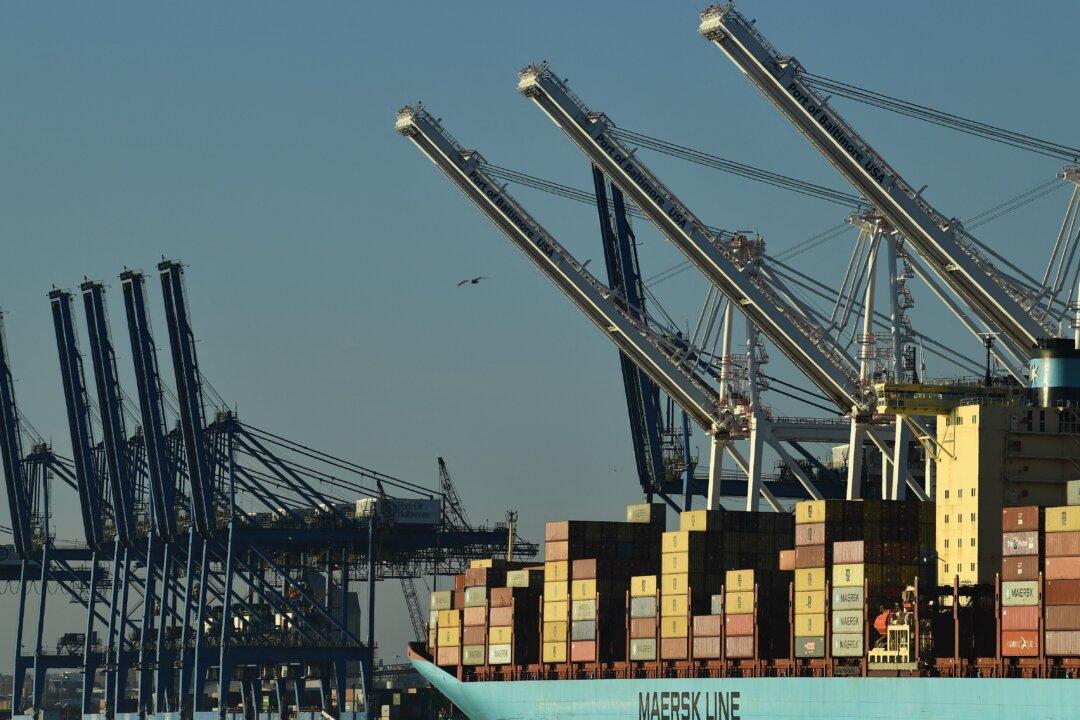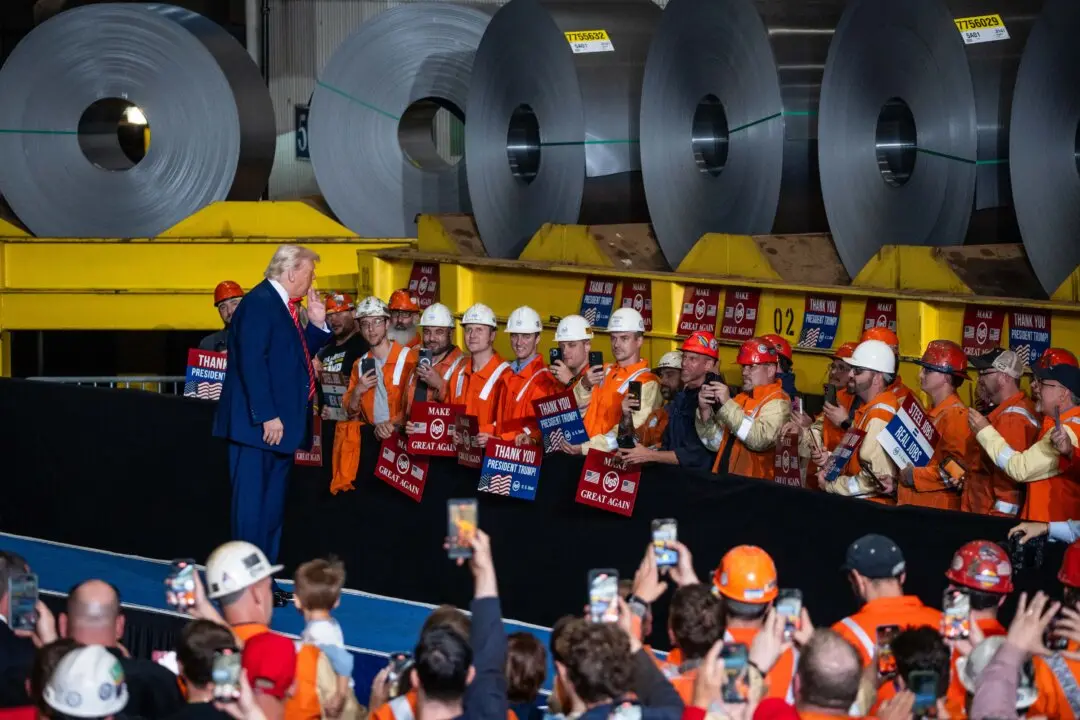Cranes manufactured in China could be the latest security vulnerability facing the United States, with the equipment potentially offering Beijing a peek into import and export data.
Shanghai Zhenhua Heavy Industries Co., Ltd. (ZPMC) is a manufacturer of ship-to-shore cranes, which are used to move containers between ships and docks. ZPMC, a Chinese state-owned firm, is estimated to account for almost 80 percent of such cranes that are currently used in U.S. ports, according to The Wall Street Journal.





